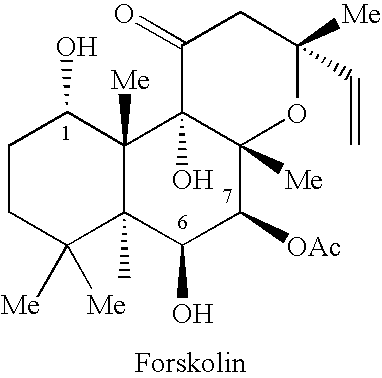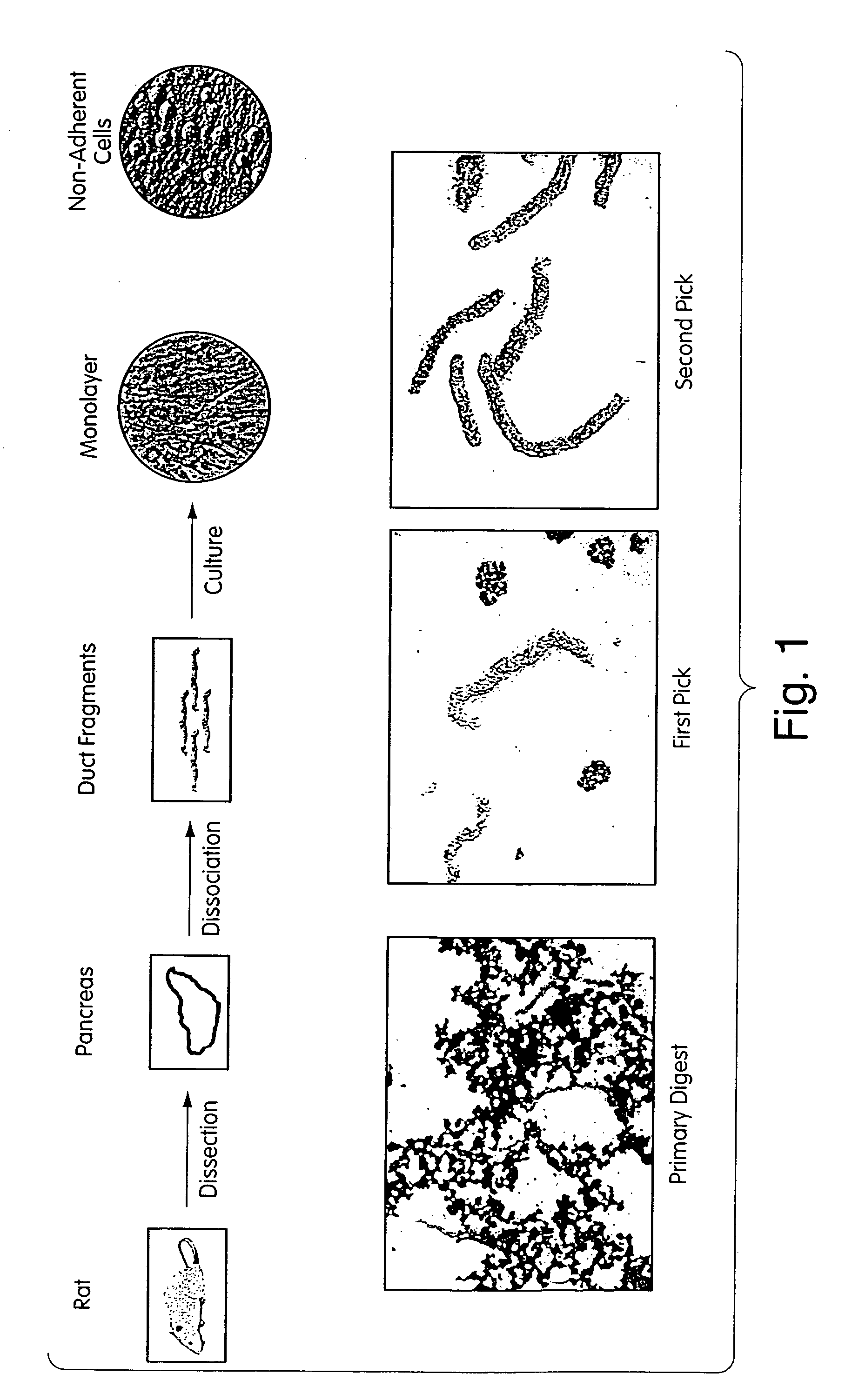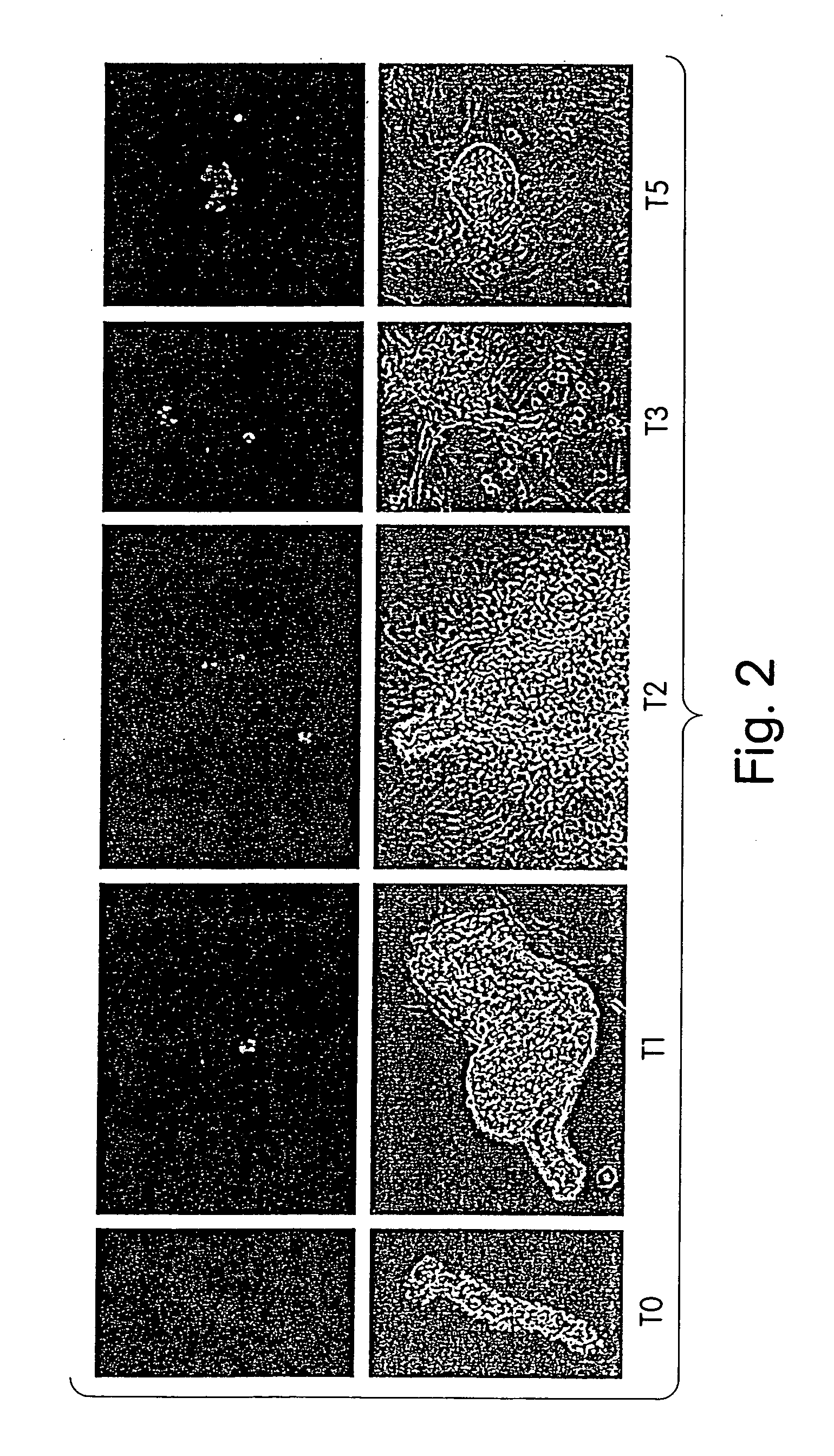Progenitor cells, methods and uses related thereto
a technology of progenitor cells and cells, applied in the field of progenitor cells, can solve the problems of excess sugar accumulation, raised sugar levels, and body's cells not being able to absorb sugar from the blood stream in normal fashion
- Summary
- Abstract
- Description
- Claims
- Application Information
AI Technical Summary
Benefits of technology
Problems solved by technology
Method used
Image
Examples
example 1
Isolation of Pancreatic Progenitor Cells
Methods
Duct Isolation and Culture
[0178] Pancreata from two litters of 2 week old Sprague-Dawley rat pups were isolated and placed into 10 ml of (1 U / ml in DMEM) Collagenase A (Boehringer-Mannheim, St. Louis) and digested for 40 min at 37° C. in a shaking water bath at 150-175 rpm. The digest was vortexed briefly and washed once with Ca++ / Mg++-free HBSS (Gibco BRL, Grand Island, N.Y.). The pellet was resuspended in HBSS and filtered through a 500 μm mesh (Costar Corning, Cambridge, Mass.) and washed again. The pellet was resuspended to 50 ml in HBSS; 10 ml was transferred to a 10 cm culture plate (Costar Corning) and placed under a dissecting scope. Individual duct fragments were selected by aspiration with a micropipette and transferred to a plate containing medium with serum. The fragments were selected from this plate a second time, transferred to a fresh tube of medium and serum, and washed before being plated. Fragments were cultured ...
example 2
Induction of Pancreatic Progenitor Cell Differentiation
[0205] The monolayer can be grown in the presence of EGF (10 ng / ml) or TGF-a (10 ng / ml) to enhance growth. Induction of differentiation is believed to be cAMP dependent. Agents which induce an increase in intracellular cAMP levels are anticipated to induce differentiation.
[0206] The cocktail DCE (1 μM Dexamethasone, 100 ng / ml Cholera toxin, 10 ng / ml EGF) induces an increase in the number of insulin positive cells in the cultured duct monolayers. FIG. 9 shows the comparison of monolayers treated with DCE+5% FCS versus 5% FCS alone. Ducts were cultured for five days and then treated for an additional 48 hours. Note that there is an approximate 5-fold increase in the total number of insulin positive cells in the culture in response to DCE treatment. The total number of cells in the culture also increases by approximately 20%. The bars represent the average of quadruplicate wells.
[0207] Dexamethasone, Cholera toxin, Forskolin, Di...
example 3
Isolation of Pancreatic Progenitor Cells using Lectin Cell-Surface Marker
[0212] We also set out to identify cell-type specific markers which could be used to isolate / purify pancreatic progenitor cells, or the pancreatic / ductal epithelial which gives rise to such progenitor cells. Amongs the various canidate reagents we tested, we discovered that certain lectins preferentially bound to, and therefor facilitate the isolation of, duct epithelial cells ultimately able to produce pancreatic progenitor cells.
[0213]Arachis hypogaea (Peanut Agglutinin, PNA) is a plant lectin that binds to specific carbohydrate groups on cell surfaces. PNA binds to galactosyl (β-1,3) N-acetyl galactosamine. It was initially selected for study as a beta cell marker (ref: Heald K A, Hail C A, Hurst R P, Kane N, Downing R, Diabetes Res 1991 May; 17(1):1-6, Separation of beta-cells from dispersed porcine pancreas by selective lectin binding); however, in our hands, PNA did NOT label islet cells from rat, but D...
PUM
| Property | Measurement | Unit |
|---|---|---|
| time | aaaaa | aaaaa |
| total volume | aaaaa | aaaaa |
| total volume | aaaaa | aaaaa |
Abstract
Description
Claims
Application Information
 Login to View More
Login to View More - R&D
- Intellectual Property
- Life Sciences
- Materials
- Tech Scout
- Unparalleled Data Quality
- Higher Quality Content
- 60% Fewer Hallucinations
Browse by: Latest US Patents, China's latest patents, Technical Efficacy Thesaurus, Application Domain, Technology Topic, Popular Technical Reports.
© 2025 PatSnap. All rights reserved.Legal|Privacy policy|Modern Slavery Act Transparency Statement|Sitemap|About US| Contact US: help@patsnap.com



